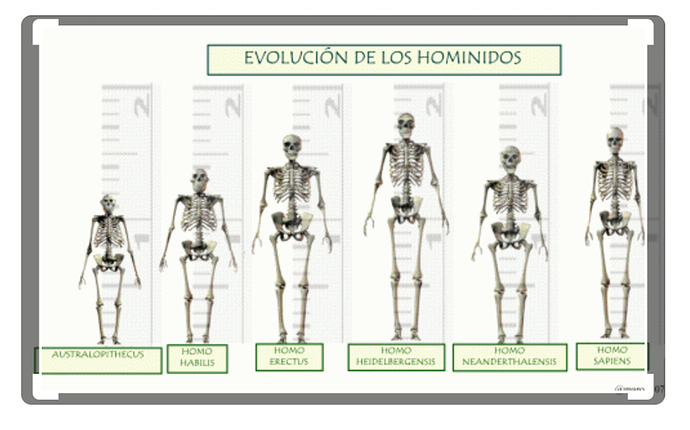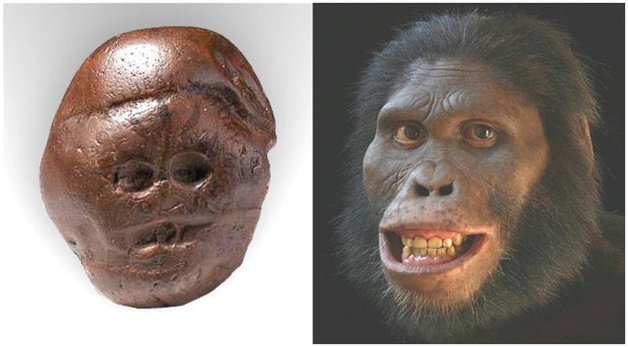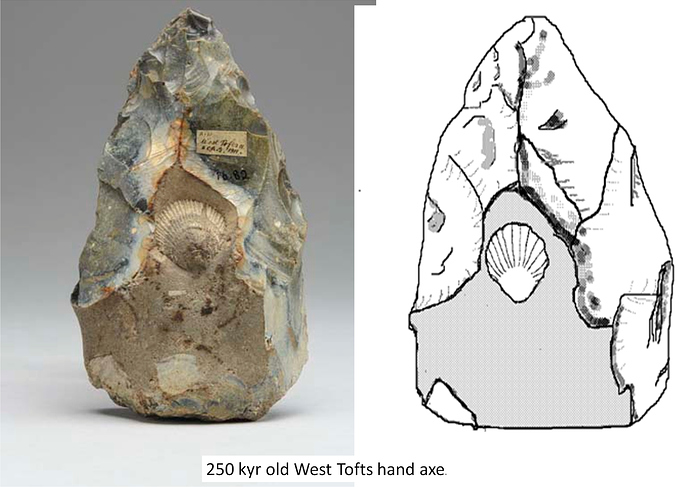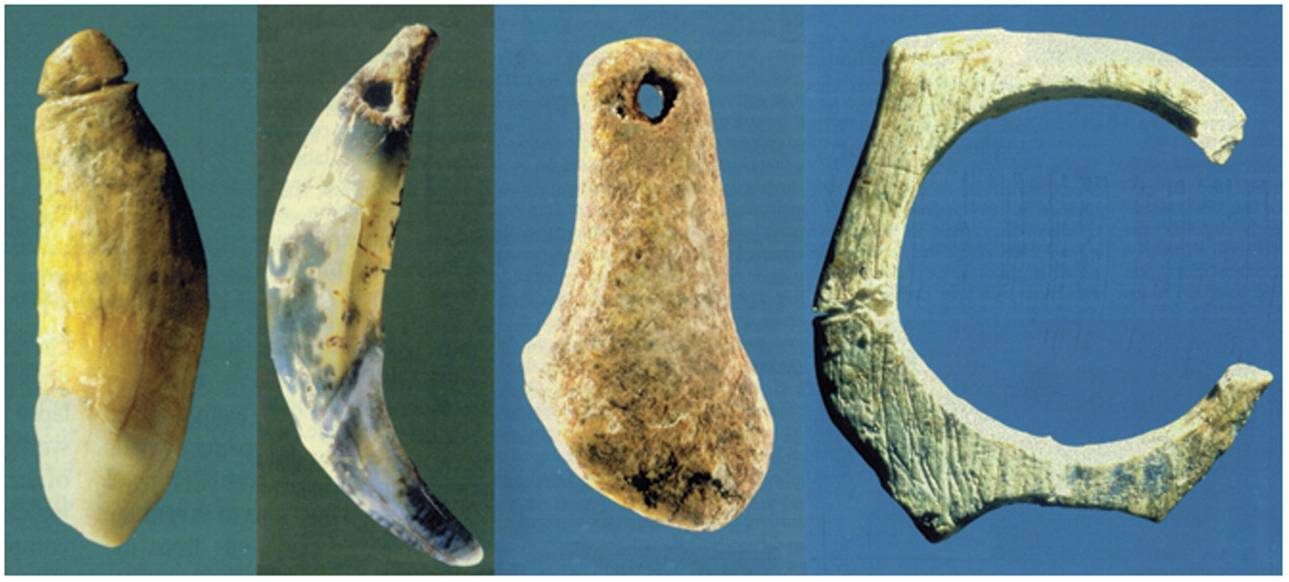I missed this and need to reply to Chris. As I noted above, many anthropologists do believe that speech/language is much older than 200kyr ago. And I would challenge you to provide evidence for the assertion that the language for philosphy is no more than 200kyr ago. What form would that or could that evidence take? While I won’t say their language was as efficient as ours, the brain structures we use in language appear with H. habilis.2.4-2.6 myr ago. It is Broca’s area and it is a word processing module (or part of one) Why would a hominid who has no ability to speak evolve one of these?
Secondly, there is very good evidence that H. erectus crossed the straits to Flores. Given that the currents are such that they are perpendicular to the island to island direction, a floating non-steerable ship/raft would be taken into the indian Ocean, away from Flores. Below is the current map.
Here is an enlargement
The reason I started talking about erectines crossing the ocean straits to get to Flores is because those who have studied this problem say they had to have a language in order to build a steerable boat. Yes, this is controversial, but it has appeared in Science:
Most researchers have believed that Homo erectus lacked the social and linguistic skills to pilot the deep, fast-moving waters that separate most Asian and Australian faunas, but in this week’s issue of Nature , an international team presents new dates for stone tools from the Indonesian island of Flores that confirm H. erectus 's presence there 800,000 years ago. Although most researchers accept the new dates for the artifacts, questions linger about whether they are really tools, and researchers are sharply divided over the team’s proposition that H. erectus used rafts and may have had language. But if H. erectus did indeed arrive on Flores by boat, it would mean that their cognitive abilities would be up for reappraisal and that the species was more adaptable than is commonly believed. https://science.sciencemag.org/content/279/5357/1635
“Homo erectus was to enjoy a very long career in the East, lasting until perhaps some 300,000 BP, and among his accomplishments in those parts is apparently to be counted the crossing of seas on at least one occasion by means of rafts, for there is an island in the Java Sea with erectus remains which was never connected to the mainland (unlike Java itself) during any fluctuation of sea level during erectus times. Some 19 km of open sea needed to be crossed to reach Flores, apparently in about 800,000 BP!” Paul Jordon, Neanderthal, (London: Sutton Publishing, 1999), p. 167
I want to remind everyone that this is Wallace’s line, one of the most solid biogeographical barriers on earth. Only mankind and the animals he brought with him crossed that line. No rafted mammals made it to Australia and the first barrier is the Lombok strait.
To cross this strait and have a viable population that will survive inbreeding, one must have the cognitive ability to determine the size of the raft in comparison with the number of people embarking, they must know and communicate how to build a rudder. They must have an understanding that building a sail or using paddles will propel the boat, They must understand the direction to point the rudder in order to not be carried out to the indian ocean by the current. They must determine how much food to take, and who to gather it and into what kind of vessel to carry it, They would have to know what material to use to build the boat, dugout, bamboo or what? (hint dugouts won’t work well in rough seas).
Because of all this, many have said that H. erectus had some form of symbolic communication–could it be a complex symbol carrying sign language? Yes, but they had to be able to communicate. H. erectus had the brain structures for word processing, so if it wasn’t used for language what was it used for? If one allows that a language can be used symbolically, then there is no limit to what symbols one can invent, including philosophical and theological symbols.
Even the planning for a fire, and the manufacture of complex tools are indicative of language:
" We cannot even dream of a chimpanzee making a fire, whether it be by rubbing two sticks together or by striking one stone against another to throw a spark into a bed of kindling." Juan Luis Arsuaga, The Neanderthal’s Necklace, transl. By Andy Klatt, (New York: Four Walls Eight Windows, 2002), p. 269-270
Fire requires knowing when to get more wood, knowing wet wood doesn’t burn, knowing how to preserve embers, knowing how to start it by two sticks or sparking. All of this requires loads of intelligence. H. erectus is the first proven user of fire.
“The fireplace would be the symbolic center of the group, a beacon by day and by night for the men who had left camp to hunt. At the stage of Homo erectus, there must have been some division of labor, with men specializing as hunters and women as collectors and perhaps preparers of food. No doubt the women looked after the children, fetched wood and water, and kept the fire going. Such groups would be apt to split up during the day but have some agreed-upon place to return to in the late afternoon or evening.
"Planning of this sort requires a language. Primitive though they may have appeared, with their heavy brow ridges, low skulls, and large chinless jaws, these men had relatively large brains, which were often within the range of modern humans. It seems likely that their brains had become sufficiently developed for language to be possible.
"Instruction in toolmaking and the use of fire would certainly be facilitated by the use of language, although perhaps conceivable without it. The tools used by Homo erectus had become more elaborate than those of the australopithecines, and Homo erectus hunted large mammals, which probably demanded planning and collective action.
"Some articles by Philip Lieberman and his associates to be discussed later in this chapter have suggested that Neanderthal communication was deficient. Homo erectus was lower on the evolutionary ladder than Neanderthals; so perhaps, if Lieberman et al. are right, use of language by Homo erectus was even more rudimentary. The view taken here, however is that some sort of language was probably spoken by Homo erectus.” ~ Victor Barnouw, An Introduction to Anthropology: Physical Antrhopology and Archaeology, Vol. 1, (Homewood, Illinois: The Dorsey Press, 1982) p. 147
If we say as some do, that language depends on the modern position of the larynx, then 8-year-olds shouldn’t be able to talk.
“Some physical anthropologists, among them anatomist Philip Tobias of the University of Witwatersrand in South Africa, believe that Homo habilis was capable of articulate speech, on the grounds that Broca’s area is developed in early Homo’s brain, but not in that of Australopithecus. Most experts, however, believe that speech developed much more gradually. Anatomist Jeffrey Laitman of Johns Hopkins University has studied the position of the human larynx by examining the base of hominid skulls. He found that Australopithecus had vocal tracts much like living apes. He was unable to study the base of Homo habilis crania as they are fragmentary, but Homo erectus had a larynx with an equivalent position to that of an 8-year-old modern child. He believes that it was only after 300,000 years ago, with the appearance of archaic Homo sapiens, that the larynx assumed its modern position, giving at least mechanical potential for the full range of speech sounds used today.” ~ Brian M. Fagan, The Journey From Eden, (London: Thames and Hudson, 1990), p. 87
Put an adult mind with that larnyx and my guess is, that communication will occur, maybe not as easily as we do it, but still language. Maybe they used click languages and avoided some of the sounds Lieberman thinks are so important. There is lots of behavioral evidence for erectines having language–generally it is ignored.








